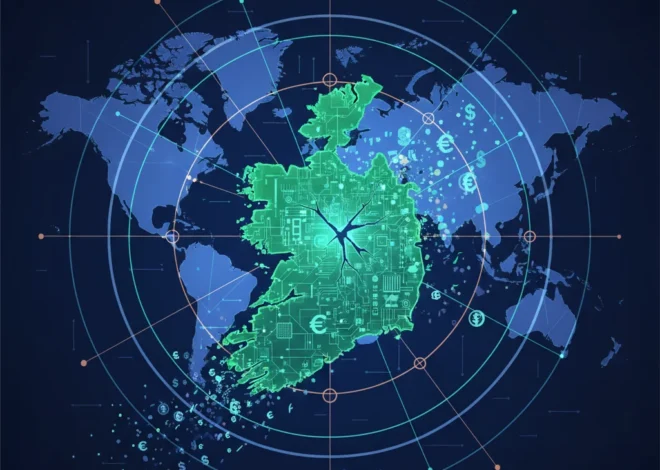
Frozen Billions, Fiery Debates: How Russian Assets Are Fueling a High-Stakes Financial Gambit for Ukraine
The High-Stakes Intersection of Geopolitics and Finance
As the world watches, a high-stakes geopolitical chess match is unfolding, not on the battlefield, but in the staid halls of international finance. Ahead of a crucial Ukraine peace summit in Switzerland, G7 nations are locked in a tense and complex debate. The subject? A groundbreaking, and deeply controversial, plan to leverage billions in frozen Russian sovereign assets to secure a massive financial lifeline for Kyiv. This isn’t just about aid; it’s a move that could redefine the rules of economic statecraft and send shockwaves through the global economy.
The core of the issue is a US-led proposal to provide Ukraine with a loan of up to $50 billion. What makes this plan a potential landmark in modern finance is how it would be repaid. Instead of relying on Western taxpayers, the loan would be serviced by the future “windfall profits” generated by the roughly €260 billion in Russian central bank assets that were immobilized in the West following the 2022 invasion. This debate is forcing a reckoning among allies, pitting American urgency against European caution and raising fundamental questions about legal precedent, financial stability, and the very nature of sovereign wealth in an interconnected world.
Deconstructing the G7’s Financial Masterplan
To understand the gravity of the situation, it’s essential to break down the mechanics of this innovative, yet perilous, financial instrument. The proposal is a sophisticated piece of financial engineering designed to solve a critical problem: how to provide Ukraine with a large, immediate, and sustainable source of funding without committing to direct, long-term budgetary aid that could be subject to political whims, such as the upcoming US election.
Most of Russia’s frozen assets, an estimated €190 billion, are held at Euroclear, a Belgium-based securities depository. These assets generate significant interest and returns, amounting to an estimated €3-5 billion per year. The EU has already agreed in principle to skim off these profits and send them to Ukraine. However, the American proposal goes a giant leap further. It suggests using these *future*, multi-year profit streams as collateral to back a massive upfront loan. In essence, they want to securitize the future earnings of a frozen hostile asset.
Here’s a simplified breakdown of the proposed mechanism:
| Component | Description |
|---|---|
| Loan Amount | Approximately $50 billion, provided upfront to Ukraine. |
| Lending Body | Likely a consortium of G7 nations or a specially created vehicle (SPV). |
| Repayment Source | The annual “windfall profits” (interest and returns) generated by the frozen Russian assets. |
| Underlying Assets | ~€260 billion in Russian central bank assets, primarily held in Europe. |
| Key Proponent | The United States, pushing for a bold and immediate solution. |
| Primary Concerns | Legal challenges, Russian retaliation, and potential instability for the Euro as a reserve currency. |
This approach is designed to be a powerful signal of long-term G7 commitment, insulating Ukraine’s funding from political shifts. However, it also introduces a host of complexities, from calculating the net present value of an uncertain future income stream to deciding who bears the risk if the profits fall short. The Goliath of Mumbai: Inside Reliance's High-Stakes War for India's Trillion Retail Market
A Continent Divided: The European Union’s Cautious Calculus
While Washington champions this aggressive financial strategy, key European capitals, including Berlin, Paris, and Rome, are proceeding with extreme caution. Their reluctance isn’t born from a lack of support for Ukraine, but from a deep-seated concern about the potential fallout for the European economy and its banking system.
European leaders are acutely aware that the majority of the frozen assets reside within their jurisdiction, making the EU the primary target for any legal or economic retaliation from Moscow. Their primary concerns can be distilled into three key areas:
- Legal Minefields: There is no clear international legal precedent for using the profits from frozen sovereign assets to back a loan for a third party. European officials fear that such a move would invite years, if not decades, of litigation from Russia, creating a legal quagmire that could be costly and destabilizing.
- Economic Retaliation: Russia has already threatened to retaliate, and Western companies still have significant assets within Russia. The Kremlin could move to seize these assets, inflicting direct financial pain on European corporations and their investors, with unpredictable effects on the stock market.
- Financial Stability and the Euro: This is perhaps the most significant long-term fear. The global financial system is built on trust and the principle of sovereign immunity. If countries like China, Saudi Arabia, or others begin to believe that their central bank reserves held in Euros are not safe from seizure or appropriation, they might begin to diversify away from the Euro. Such a shift, even if gradual, could weaken the currency, increase borrowing costs for EU nations, and diminish Europe’s standing in the global financial order. This is a risk that officials at the European Central Bank take very seriously (source).
–
–
This divergence highlights a fundamental difference in risk appetite between the US and the EU. For Washington, the primary risk is the collapse of Ukrainian resistance. For Brussels, the systemic risk to its currency and financial architecture looms just as large.
Exceedingly Good Returns: How a 1960s Cake Brand Baked a Modern Financial Turnaround
While the immediate focus is on the legal and economic risks, the long-term implications for investing and international economics are profound. This move could create a new playbook for future conflicts, but it also risks fragmenting the global financial system. We could see the emergence of parallel systems where nations align their reserve holdings based on geopolitical alliances rather than purely economic logic. Furthermore, this situation is forcing an evolution in financial technology and legal frameworks. The complex structures needed to manage this loan, track the proceeds, and allocate risk are pushing the boundaries of traditional sovereign trading and debt management. While not directly a blockchain application, the underlying need for transparent, immutable ledgers to manage such a contentious and politically sensitive fund is glaringly obvious. Investors and business leaders must now factor in a new layer of political risk where even state-owned assets, once considered sacrosanct, are on the table.
Forging a Fragile Consensus Before the Summit
With the G7 leaders’ summit in Italy fast approaching, the pressure to bridge the transatlantic divide is immense. Diplomats are working around the clock to hammer out a compromise that satisfies America’s desire for a bold gesture while assuaging Europe’s deep-seated anxieties. The final agreement will likely be a complex hybrid, carefully worded to minimize legal exposure.
The technical details are devilishly complex. Key sticking points include:
- Risk Sharing: Who is on the hook if the war ends, sanctions are lifted, and the assets are returned to Russia before the loan is repaid? Who bears the loss if interest rates plummet and the asset profits are insufficient?
- Loan Structure: Will it be a single loan from a G7-backed entity, or a series of bilateral loans that are collectively guaranteed?
- Legal Framework: How can the plan be structured to ground it in international law, specifically the concept of countermeasures against an aggressor state, to fend off legal challenges?
Finding consensus is critical. A failure to agree on a robust, long-term funding plan before the peace summit would be a significant political blow, signaling disunity to Moscow and uncertainty to Kyiv. A successful agreement, on the other hand, would represent the most creative and forceful use of economic sanctions to date, providing Ukraine with the means to continue its defense and plan for eventual reconstruction.
The Trillion-Dollar Bug: How AI and New Financial Models Are Fuelling the War on Superbugs
The Ripple Effect: Broader Implications for the Global Financial Order
Regardless of the final details, this debate has already changed the landscape of international finance. The very act of considering the seizure of sovereign asset profits for this purpose has crossed a long-held red line. This will have lasting consequences for central banks, investors, and multinational corporations everywhere.
For the investing community, it introduces a new and potent form of geopolitical risk. The stability of reserve currencies and the safety of cross-border investments can no longer be taken for granted. For finance professionals and those involved in financial technology, it opens up a new frontier of challenges and opportunities in structuring instruments that can navigate this treacherous new environment.
Ultimately, the G7’s decision on this $50 billion loan is about more than just money. It is a defining test of Western resolve and a powerful experiment in 21st-century economic warfare. The outcome will not only shape the future of the conflict in Ukraine but will also set a powerful precedent that will echo through the global financial system for decades to come. The world of international finance is watching, and the rulebook is being rewritten before our very eyes.


